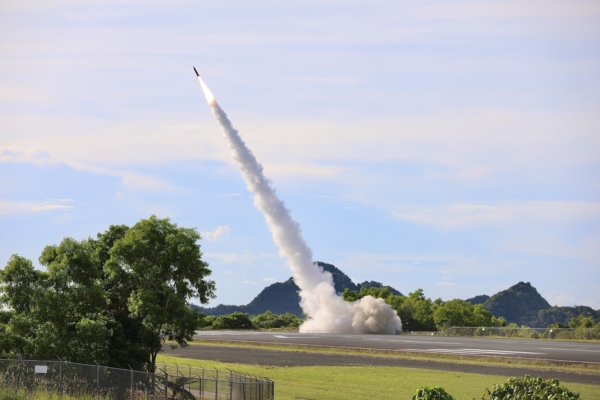On Tuesday, the United States and Australia announced a series of security cooperation plans aimed at strengthening deterrence against China in the Indo-Pacific region. The plans include establishing new “operational locations” in Australia, increased troop rotations, and the joint production of two key guided weapons. These initiatives were unveiled at the 34th Australia-United States Ministerial Consultations (AUSMIN) press conference.
During the press conference, U.S. Defense Secretary Austin stated that the alliance between the U.S. and Australia is becoming increasingly tight, describing it as an “unbreakable alliance.” He emphasized that these efforts will ensure the capabilities needed for the decades to come and will contribute to greater peace, stability, and deterrence in the region.
The meeting was attended by Australian Defense Minister Marles, U.S. Secretary of State Blinken, and Australian Foreign Minister Wong. In their joint statement, the ministers expressed concern over China’s unilateral actions in the South China Sea to alter the status quo and military activities near Taiwan by Chinese forces.
Austin mentioned that the U.S. and Australia are intensifying their defense industry cooperation efforts and are working towards finalizing two cooperation memorandums by December. The first memorandum will formalize the manufacturing of the Guided Multiple Launch Rocket System (GMLRS) in Australia by 2025.
The second memorandum aims to advance the joint production, maintenance, and development of the Precision Strike Missile (PrSM). This collaboration follows their agreement in 2021 to jointly develop the PrSM.
Additionally, both countries are exploring advanced hypersonic technology, which is expected to provide critical advantages for military personnel. The joint research and testing project, Southern Cross Integrated Flight Research Experiment (SCIFiRE), focused on air-launched hypersonic weapons, has made significant progress.
Australian Defense Minister Marles highlighted the groundbreaking discussions on enhancing defense industry base cooperation between the two nations, particularly in the field of manufacturing guided weapons in Australia. He noted the significant opportunities for Australian companies to contribute to the U.S. supply chain.
Marles also mentioned plans for further cooperation between the U.S. Defense Innovation Department and its Australian counterpart, with a separate memorandum set to be signed.
Australia has agreed to provide new and longer-term operational locations to enhance collaboration, expand logistics cooperation, and assess establishing a permanent logistics support area in Queensland.
Austin stated that the U.S. military will increase rotational forces in Australia, including additional maritime reconnaissance aircraft and more frequent bomber rotations.
Marles emphasized that these collective efforts will significantly enhance U.S. operational capabilities in Australia, providing opportunities for collaboration with regional partner nations.
Together with the escalating tensions with China, the U.S. has been providing support and strengthening alliances in the Indo-Pacific region. Last week, Austin and Blinken concluded visits to Japan and the Philippines, resulting in significant progress in cooperation with these two Pacific nations.
Officials also highlighted the enhanced cooperation with Japan, in addition to bilateral projects, to jointly improve intelligence, surveillance, and reconnaissance (ISR) capabilities in the Indo-Pacific region.
“We will discuss in the coming days…how Japan will further integrate into the U.S. military posture in Australia,” the U.S. official stated.
Austin and Marles further emphasized the importance of collaboration with regional partners such as India and the Philippines.

